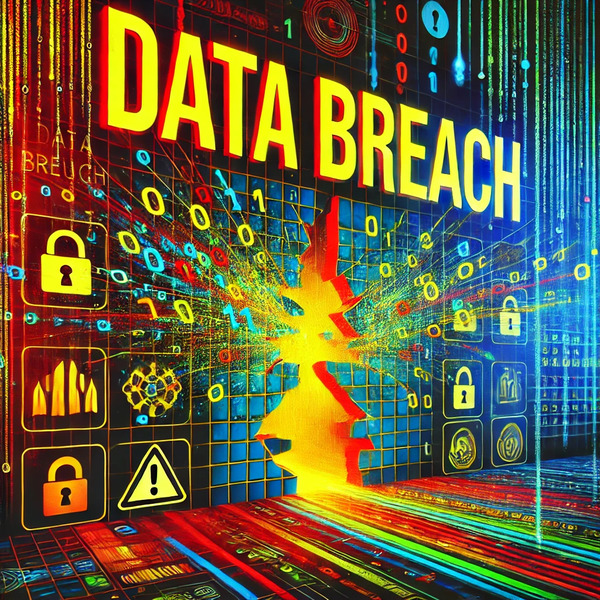
In today’s increasingly digital world, concerns about the safety and security of personal and corporate data are paramount. With high-profile incidents in the media, terms like “data breach” and “data leak” are often used interchangeably. However, there are significant differences between the two, each with unique implications for businesses and individuals. Understanding these differences is crucial for responding effectively to these incidents and protecting sensitive information.
What is a Data Breach?
A data breach refers to an intentional or unintentional incident where unauthorized individuals or entities gain access to sensitive or confidential data. The key aspect of a data breach is that it involves malicious or unauthorized access to protected data. This can happen in a variety of ways, such as through hacking, phishing attacks, or the exploitation of vulnerabilities in a system.
Examples of data breaches include:
• Hackers gaining access to a company’s database and stealing sensitive customer data.
• A company insider improperly accessing or misusing confidential information.
• Ransomware attacks where data is encrypted and held hostage until a ransom is paid.
Data breaches can involve anything from email addresses to financial records, healthcare data, or intellectual property. Once the breach has occurred, the stolen or exposed data can be used for malicious purposes, such as identity theft, fraud, or even corporate espionage. Due to the intentional nature of the access, data breaches often have legal consequences, including fines, lawsuits, and reputational damage.
Key Characteristics of a Data Breach:
• Unauthorized access to data, often by cybercriminals or insiders.
• Malicious intent or exploitation of vulnerabilities.
• Often results in stolen data being used for illegal activities.
• Affected parties are often notified because of legal obligations.
What is a Data Leak?
A data leak, on the other hand, typically occurs when data is accidentally exposed or unintentionally made accessible to the public or unauthorized individuals. Unlike a data breach, there is usually no malicious intent behind a leak. The exposed data may have been left unprotected due to poor security practices or simple human error.
Examples of data leaks include:
• A cloud server misconfiguration that makes sensitive files publicly accessible.
• Employees accidentally emailing confidential documents to the wrong recipient.
• A company’s website that inadvertently exposes user data due to coding errors or security flaws.
While data leaks do not involve the malicious theft of data, they can still have serious consequences. Exposed data can be accessed by anyone, including criminals, competitors, or hackers. In some cases, the leak may go unnoticed for an extended period of time, leaving the exposed data vulnerable to misuse.
Key Characteristics of a Data Leak:
• Data is exposed due to human error or poor security practices.
• There is no malicious intent behind the exposure.
• Affected data is often accessible by anyone with the right access.
• The exposed data may be accidentally found, without any criminal action.
Key Differences Between a Data Breach and a Data Leak
While both incidents result in the exposure of sensitive data, there are important distinctions between a data breach and a data leak:
1. Intent:
@ A data breach involves malicious intent or unauthorized access by cybercriminals or insiders.
# A data leak is typically caused by human error or a lack of proper security protocols.
2. Cause:
@ A data breach is the result of deliberate actions, such as hacking or exploitation of system vulnerabilities.
# A data leak usually occurs because of poor security practices, like leaving files publicly accessible or making inadvertent mistakes.
3. Consequences:
@ A data breach often involves the stolen data being used for fraudulent or malicious activities, such as identity theft, blackmail, or financial fraud.
# A data leak may expose data, but typically there is no immediate malicious use, though it can still lead to reputational damage or legal action.
4. Discovery:
# A data breach often takes longer to detect, as cybercriminals may cover their tracks or continue accessing the system without detection.
# A data leak is usually noticed sooner because it is typically accidental and can be easily accessed by anyone.
5.Legal Ramifications:
# A data breach often requires immediate notification to affected individuals, regulatory bodies, and possibly legal consequences for the organization responsible.
# A data leak might not involve the same level of legal responsibility if it’s due to negligence, though regulations like GDPR require organizations to address such issues.
Why Understanding the Difference Matters
For businesses, the distinction between a data breach and a data leak is crucial for determining their response strategies, liability, and the appropriate measures to take to prevent further exposure. Data breach protocols typically include immediate investigation, legal notifications, public disclosures, and credit monitoring for affected individuals. On the other hand, while data leaks may still require corrective actions, the primary focus is often on improving security measures and addressing any vulnerabilities.
For consumers, understanding the difference can help them better gauge the risk and potential impact of a data exposure incident. Whether it’s a breach or a leak, taking immediate steps to protect personal information, such as changing passwords, monitoring accounts, and staying informed, is essential.
Final Thoughts
Though the terms “data breach” and “data leak” are often used interchangeably, they represent distinct types of incidents with different causes, consequences, and responses. While data breaches involve deliberate criminal activity aimed at stealing sensitive information, data leaks typically result from accidental exposures or poor security practices. Both can have serious implications for privacy, security, and compliance, making it crucial for organizations to maintain robust cybersecurity measures and data protection protocols to safeguard sensitive information.
By understanding these differences, individuals and businesses can take appropriate steps to protect their data and respond effectively in the event of an incident.


















